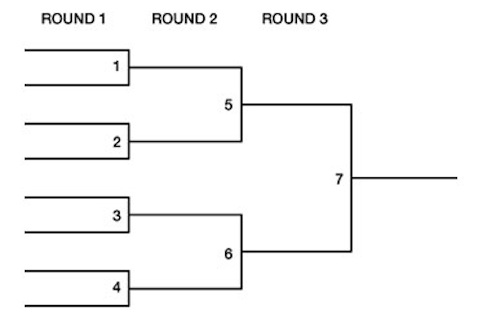This Thursday used to represent my favorite day of the year. It still probably does in some respect, although I didn’t follow college hoops super closely this year, so I’m a little out of the game. But it’s essentially wall-to-wall basketball for two days, then mostly wall-to-wall basketball for another two, with the possibility of insane upsets and finishes anytime there’s a tip. It’s amazing. It’s quite literally madness. I’ve been to Vegas three times for this thing, I’ve cut school for this thing, I’ve driven all through the night for this thing, etc. I adore it. (Note: it’s a little less cool watching an Elite Eight game off-strip next to a drunk family from Montana where the dad is passed out on the bar snoring, but that’s what happens when you book travel poorly.)
So let’s talk context. Why in the ever-loving hell is it called “March Madness?” Glad you asked:
March Madness traces back to Illinois’ statewide high-school basketball tournament, which began in 1908. In 1939, an official with the Illinois High School Association, Henry V. Porter, penned an article called “March Madness” for the organization’s in-house magazine. “A little March madness may complement and contribute to sanity and help keep society on an even keel,” he wrote. Three years later, he followed up with a poem, “Basketball Ides of March,” which read in part: “A sharp-shooting mite is king tonight/ The Madness of March is running.”
Cool. So Illinois high school basketball brought us the greatest event within college basketball. Interesting. (If you want a more current reference, people associate it with Brent Musburger in 1982.)
But now, why is it all structured as a bracket? How did humanity get the idea to organize competitions in such a way? Again, glad you asked:
One of the first single-elimination tournaments in the modern era was the London 1851 chess tournament, organized by the British champion Howard Staunton. Motivated by “the chivalrous anxiety to test the relative skill of the most distinguished champions,” he invited the top players from around Europe to London’s Great Exhibition. In a prospectus, Staunton laid out in some detail how a field of 32 competitors might neatly be whittled to a single champion by matching them in 16 pairs, then eight, then four, and so on—suggesting that the concept of a single-elimination tournament was not yet widely understood. “The mode adopted for pairing the combatants, will, it is hoped, bring the two best players in the Tournament into collision for the chief prize,” he explained.
So here — two of the things that almost half of America does in the third week of March came from (a) high school athletics and (b) London chess circles, despite relating to (c) college athletics and (d) American’s obsession with ball/bat sports. Intriguing.
One of the first major NCAA Tournament pools, by the by, was held by a Staten Island bar whose owner later got popped for tax evasion.

Reblogged this on Chess Musings and commented:
The roots of the NCAA Basketball Tournament apparently can be traced to Howard Staunton?!
http://www.vocabulary.com/articles/wordroutes/a-final-four-of-march-madness-lingo/
Which brings us to the equally alliterative March Madness. While March and madness first fell together thanks to the expression “mad as a March hare,” the phrase came into its own in Midwestern high school basketball tournaments. The Los Angeles Times recently told the accepted tale, that March Madness was coined by Henry V. Porter to describe the Illinois high school championship in 1939. But Barry Popik was quick to point out that neighboring Indiana has a prior claim, as there are examples of March Madness being used for basketball tournaments there all the way back to 1931. (Confronted with Popik’s evidence, the L.A. Times admirably issued a correction to their article.)